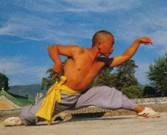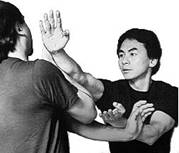SYSTEMS AND STYLES
Wushu can be divided in categories based on different criteria.
1. External styles and internal styles
- External styles – Waijia – are based on physical strength, speed, mobility, explosive movements and agility. The classic external system is the ‘Shaolin Kung Fu’.
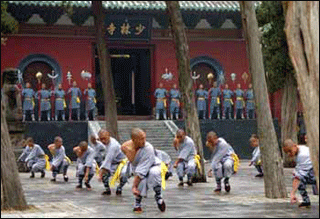
- Other external systems are the imitative ones, in which the man who practices imitates the fighting style of a specific animal – that of the eagle, the crane, the dragon, the snake, the tiger or even a human attitude – like the ‘drunk man style’. External styles consist of specific exercises through which particular abilities can be gained. Thus, having trained for a long time, practitioners can get fingers like beasts’ claws, fists and palms as hard as steel, they can get their body able to resist any kicks or develop distinguished speed or mobility.
- Internal styles – Neijia – are those that combine breathing exercises, focusing, coordination of thoughts and clarity of the spirit. These vectors, accordingly orientated have as a result the capacity of generating and guide the human body’s bioenergy. The most spread internal style is the ‘Taijiquan’ with its 5 subtitles. Other well-known internal styles are the ‘Bagua Zhang’ and ‘Xing I’.
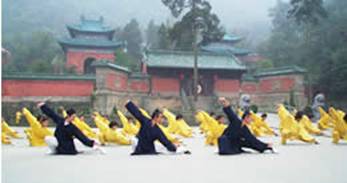
2. The Northern styles and the Southern styles
In old China it was said that a real fighter has northern legs and southern arms meaning being able to practices and apply northern leg techniques and southern hand techniques.
Northern styles originate from the North of Yangtze river. The ample movements' mobility, lots of leg kicking technique and acrobatics are specific for these styles. The Chinese from the North are taller, thus they used this advantage in fight, practicing techniques with wide scope. One of the most popular northern style is the Chang Quan – Long Range Boxing, that can be found in nowadays competitional Wushu. Other known Northern styles are the Chaquan, the Huaquan, the Tanglang (mantis), Yingzhao (Eagle’s claw), the Baijiquan and so on.
The Southern styles, originate from the South of the Yangtze river and their characteristics are those of strong arm techniques. Southern Chinese were shorter, the moist climate didn’t encourage joints, so movements were shorter and leg kicks less. In this case, Southern styles developed an impressive variety of arm kicks and blocks. These were specifically explosive, fast and hard. The Southern Boxing – NanQuan represents the synthesis of the most important Southern styles. Other very popular Southern styles are the following: the Wing Tsun, the Hung Gar, the Choy Li Fat, the Hu Zhao (Tiger’s claw).
3. Taoist styles, the Buddhist style and the Musulman style
Another criterion of classification of the Chinese martial arts is the religious one.
The Taoist styles transpose in movement the classical principle of the five elements, eight trigrams and the Yin-Yang duality principle. Taoist monks practiced these exercises about 500BC. The center of origin for the Taoist styles is the monastery complex on the Wudang mountain. An important representative of the Taoist styles, worldwide known is the Taijiquan.
The Buddhist styles have roots in the Chan Buddhism, which was practiced in temples. The Buddhist monks included in these styles the principles and symbols of the Buddhist religion. The most wellknown and important trademark are the Shaolin Quan and Pai He Quan (White Crane).
Musulman styles were developed by numberless musulman etnics who live in China. The specific style is ‘Tsa Quan’.
4. The criterion of approaching fight
Due to this criterion the styles have a great variety.Fight with kicks and blocks, a true fencing, in which the weapons are the hands, the legs, the body or the head.The hand to hand fight with throwing, strangling and wrestling, looking like free wrestling is called the ‘Shuai Jiao’.Chin Na is the system of capturing the opponent with different holding techniques and joints manipulations.
The Tui Shou is the method of gluey hands. In this kind of combat, the movements are continuous, hands are in permanent contact with the opponent and get his unbalance and throwing.
STYLES
We don’t intend to lay in detail information about the styles, because their number is over 300. Next, we just want to mention the main characteristics of the most known Wushu styles. The styles are diverse and based on very well defined principles. They are imitative styles, which apply the fighting methods of the animals or reproduce some human attitudes. They are styles that apply philosophical principles; others try to achieve maximal efficiency during the combat. In some styles the vital points are attacked, while the others are practiced for maintaining health.
1. Taijiquan – The Boxing of Supreme Perfection
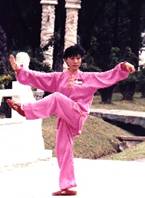
It’s one of the most wellknown styles; it's practicing having benefic effects on health and longevity. It is known as ‘the art of meditation in motion’. Its roots can be found in Wudang Mountains and it was created by the Taoist monk Zhang Sangfeng in the 13th century. Actually it has 5 known substyles. It is compulsory in Wushu sport competitions.
- 2. Baguazhang – The palm of 8 trigrams
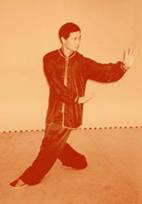
This style applies in motion the principles of the 8 transformations from the Chinese book of ‘Yi Ching’. Each trigram includes a group of movements that bond fluently while the practitioner moves in circle. The creation of the style is attributed to Dong Haichuan – 19th century.
3. Xingyiquan – The Form and Meaning Boxing
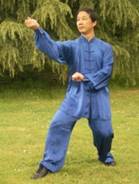
Inspite of its relative simple movements it is a hermetic style, hard to gain insight. The movement is straight and explosive. Kicks are singular and violent intended for crushing the opponent. The inner energy is concentrated in these efficient kicks that look like the pierce of a spear.
4. Yingzhaoquan – The Eagle’s Claw Style
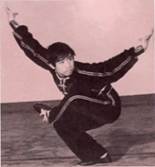
It was created by the great General Yue Fei in the 12th century, in order to train his troops for fight. The style is characterized by vigorous catching and throwing techniques, practiced with the help of the eagles claw, by wide and supple wing movements and by a lot of terrible kicks.
5. Tanglangquan – the Style of the Mantis
In the world of the insects it is a frightening predator. The style is characterized by vigorous catching movements that cause the opponent’s lack of balance, followed by the devastating continuous attacks, shirks and spectacular jumps. It comes from the Shandong Province and nowadays it has numerous substyles.
6. Shequan – The Snake Style
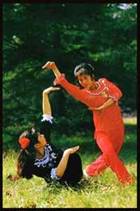
The movements of the trainer are fluid and unexpected, deep and surrounding. The movement of the arms and hands imitating the serpent’s head is specific for this style. The whipping movements are done in a great speed and they are meant to attack the vital parts of the opponent. The style is also characterized by a great variety of kicks.
7. Houquan – The Monkey Style
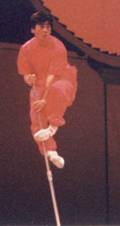
Having its origin in the legend ‘Travelling West’, the Monkey King is a beloved character in the Chinese Mythology. Known as a legendary fighter, a famous stick fighter, he inspired the creation of this style, which has six known branches nowadays. The style is mainly characterized by quick acrobatic movements. The apparently playful movements are meant to outfit the opponent, because the monkey’s attack is violent and incisive. The shaking and randing catching movement is the characteristic emblem of this style.
8. Zuiquan – The Drunkard’s style
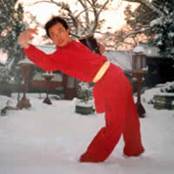
In this curious style, the trainer imitates the unbalanced and unexpected movements of a drunken man. Although the movements are apparently uncontrolled and chaotic, the practitioner loses his balance, falls, turns heels over head, he is awake and concentrated in his spirit, all his role being played only to outfit his opponent. It can be a very spectacular and efficient style if it is well known and well practiced by those interested. The style has its origin in the legend of ‘The Eight Immortals’ in the Chinese Mythology.
9. Modern Wushu
Changquan – The Northern Style
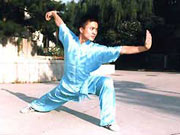
This sport event characterized by an elastic style consists of twists, jumps, acrobatics, elegant and quick movements. Changquan needs special elasticity and mobility, that is why it is recommended to the young people. It is the handling of the sword, the spear, the saber and the elastic stick that must be exercised when practicing this sport style. The recently introduced difficult elements – NANDU – are highly difficult acrobatic techniques, which place the Wushu among the authentic Olympic Sports.
Nanquan – The Southern Style
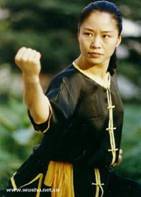
It is an explosive, vigorous sport, based on quick and powerful arm movements. The style requires intense force and speed of movement. Practicing this style in a sport competition, one must handle the south saber and the rigid stick. The difficult elements also contain difficult jumpings practiced in gymnastics.
Taijiquan
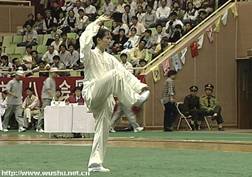
In its competitional variant, it contains difficult spectacular elements, its choreography having a wider freedom of movements. The weapon used in this style is the sword.
Sanda – the Fighting Competition
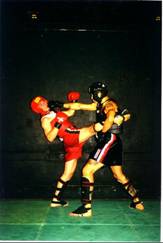
To remind the tradition of the old fights, which took place on high platforms surrounded by spears put in the ground, the fight competition take place on a meter high platform. Falling off these platforms often had fatal consequences. The fight is a full contact one, the sportsmen being able to use arm and leg kicks. They can also use throwings. The sportsmen fight while standing and the fight doesn’t go on the ground. They use protecting objects. The result of the fight is decided by score, abandon or KO
Duilian – Group Exercise
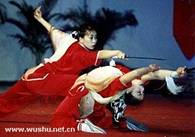
The fight choreography is thought for 2 or 3 practitioners. It could be presented barehanded or by using weapons.
10. Wing Tsun
This style was created by Ng Mui nun and it was thought and meant for those who lack special physical abilities. It is mainly characterized by the use of arm techniques. They are used in long series and are combined with efficient shirks and parries. The style uses high stances that allow rapid movements. The most regretted and famous Bruce Lee practiced this style.
11. Tan Tui
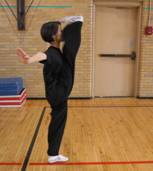
It is a special style, based on kicks and wide buffet. It can be traced back to the China Musulman Community. The beauty of this style consists in its balanced, pushing kicks or from those practiced from jumping. This style is used as a basic exercise in many systems.
12. Ditangquan
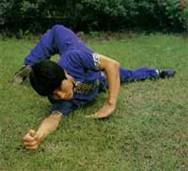
It is a spectacular style, totally based on acrobatics. It is called ‘Turn Heels Over Head and Falling Boxing. The sportsman practicing this style must be able to do acrobatics perfectly, because the attack and the defense, the shirks and the movements are based on these acrobatic elements. This is a beautiful but very difficult style.
